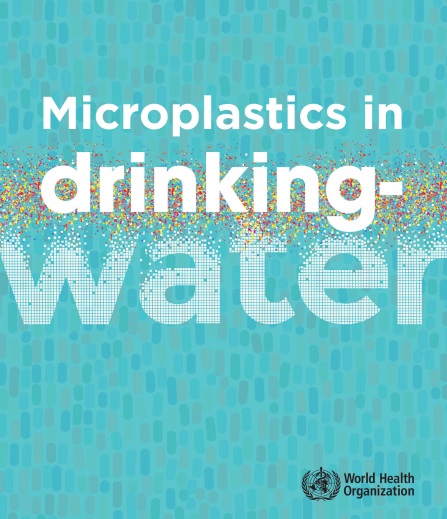World Health Organisation calls for crackdown on plastic pollution and more research into microplastics in drinking water
- August 22, 2019
- Posted by: administrator
- Category: Environmental, Global, Water Issues, Water Treatment

The World Health Organization (WHO) is today calling for a crackdown on plastic pollution and more research into microplastics in the environment and the potential risks for human health,
Studies reporting the presence of microplastics in treated tap and bottled water have raised questions and concerns about the impact that microplastics in drinking-water might have on human health.
The WHO has today released a new analysis of current research related to microplastics in drinking-water.
Its report, Microplastics in Drinking Water, critically examines the evidence related to the occurrence of microplastics in the water cycle (including both tap and bottled drinking-water and its sources), the potential health impacts from microplastic exposure and the removal of microplastics during wastewater and drinking-water treatment.
Dr Maria Neira, Director, Department of Public Health, Environment and Social Determinants of Health, at WHO explained:
“We urgently need to know more about the health impact of microplastics because they are everywhere – including in our drinking-water.”
“Based on the limited information we have, microplastics in drinking water don’t appear to pose a health risk at current levels. But we need to find out more. We also need to stop the rise in plastic pollution worldwide.”
According to the analysis, which summarizes the latest knowledge on microplastics in drinking-water, microplastics larger than 150 micrometres are not likely to be absorbed in the human body and uptake of smaller particles is expected to be limited. Absorption and distribution of very small microplastic particles including in the nano size range may, however, be higher, although the data is extremely limited.
WHO is recommending drinking-water suppliers and regulators prioritize removing microbial pathogens and chemicals that are known risks to human health, such as those causing deadly diarrhoeal diseases.
This has a double advantage: wastewater and drinking-water treatment systems that treat faecal content and chemicals are also effective in removing microplastics.
However, the WHO wants to see further research to obtain a more accurate assessment of exposure to microplastics and their potential impacts on human health, including:
- developing standard methods for measuring microplastic particles in water;
- more studies on the sources and occurrence of microplastics in fresh water;
- and the efficacy of different treatment processes.
Wastewater treatment can remove more than 90% of microplastics from wastewater, with the highest removal coming from tertiary treatment such as filtration, while conventional drinking-water treatment can remove particles smaller than a micrometre.
A significant proportion of the global population currently does not benefit from adequate water and sewage treatment. By addressing the problem of human exposure to faecally contaminated water, communities can simultaneously address the concern related to microplastics.
The report makes a number of recommendations on additional research needed to fill existing data gaps including:
- Development of standard methods: There is a need to improve microplastic sampling and analysis using quality-assured methods.
- More studies on the occurrence and characteristics of microplastics: There is a need to better understand the occurrence of microplastics in the environment and in drinking-water using quality-assured methods to determine numbers, shapes, sizes, composition and sources of microplastics.
- Improved understanding of sources of microplastics into fresh water: Although surface run-off and wastewater effluent are considered the main sources of microplastics into fresh water, better data are required to quantify their contributions relative to other inputs and identify the original sources of contamination
- More data on the occurrence and fate of microplastics throughout the water supply chain: In drinking-water, an understanding of the occurrence and fate of microplastics is needed throughout the water supply chain
- More data on the return and significance of treatment waste streams: Since plastics are usually not destroyed, but rather transferred from one phase to another, a better understanding on the return and significance of microplastics to the environment from drinking-water and wastewater treatment waste streams, including sludge, is needed. There are currently limited data available on this.
- Increased understanding of toxicological effects of microplastics following ingestion:
- More data on the uptake and fate of microplastics in the GI tract:
- Better understanding of overall microplastic exposures in the environment
Click here to download Microplastics in drinking water
